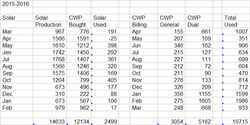- Aug 6, 2007
- 442
Or you could add a Nyle Geyser R to the Marathon and have something nice, a modular unit where if something goes wrong with the heat pump years from now you don't have to toss the tank...
I was rather interested in the Geyser until I saw the price. On amazon it's 900 bucks and while I may be able to find it slightly less elsewhere, thats a chunk of change and I can't see that being a smart move for me at this time. The marathon is only a few years old and is a great water heater that I won't be selling. The warranty alone would keep me. If the geyser was less expensive, like say half, I can see that being a good option and the dehumidification is a nice plus, especially for my basement install.


